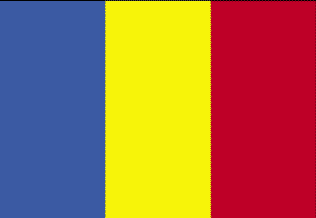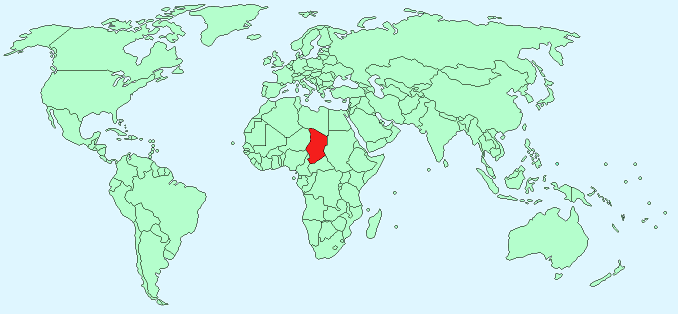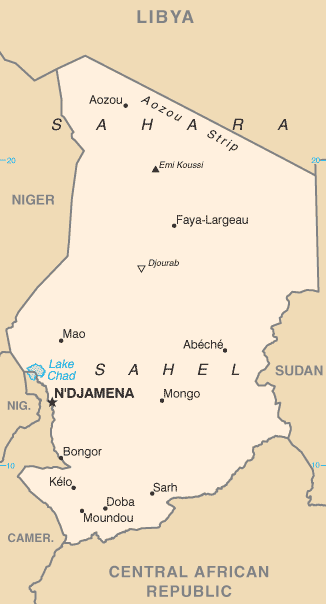Chad


Continent – Africa
Region – Central Africa
Size – 1.284,000 km²
Geography – Central plains, Sahara desert in north, mountains north-west, lowlands in south
Language – French, Arabic
Religion – 53% Muslim, 20% Roman Catholic, 15% Protestant, 7% animist, 3% Atheist
Monetary Unit – Central African Franc
Natural Resources – petroleum, uranium, natron, kaolin, fish (Lake Chad), gold, limestone, sand and gravel, salt
Agriculture – cotton, sorghum, millet, peanuts, rice, potatoes, manioc (tapioca); cattle, sheep, goats, camels
Industry – oil, cotton textiles, meatpacking, beer brewing, natron (sodium carbonate), soap, cigarettes, construction materials

Neighbouring Countries – Libya, Sudan, Central African Republic, Cameroon, Nigeria, Niger
Population – 11,412,107 (2014 estimate)
Population Growth Rate – 2.32%
Average Life Expectancy – 47
Capital City – N’Djamena (population 1,092,066)
Highest Mountain – Emi Koussi (3,415 m)
Rivers – Chari and Logone flow through Chad
Climate – North – Saharan -12°C (night) to 50°C (day), South – hot, dry winters 14°C to 33°C, very hot, wet summers 28°C to 42°C
Yearly Rainfall – South -76cm (approx), North – 2.5cm (approx) frequent droughts
Plant Life – North – very little plant life – occasional palm oases, Middle – steppe and savannah grasses, South – shrubs, tall grasses, and scattered broad-leaved deciduous trees
Animal Life – elephant, hippopotamus, rhinoceros, warthog, giraffe, antelope, lion, leopard, cheetah, hyenas, snakes
Bird Life – rich and varied
Aquatic Life – many species of fish in lake Chad
Harvard Reference for this page:
Heather Y Wheeler. (2015). Chad. Available: https://www.naturalhistoryonthenet.com/Facts_Figures/Country_Facts/chad.htm. Last accessed Monday, July 18, 2016
Facts and Figures Pages
